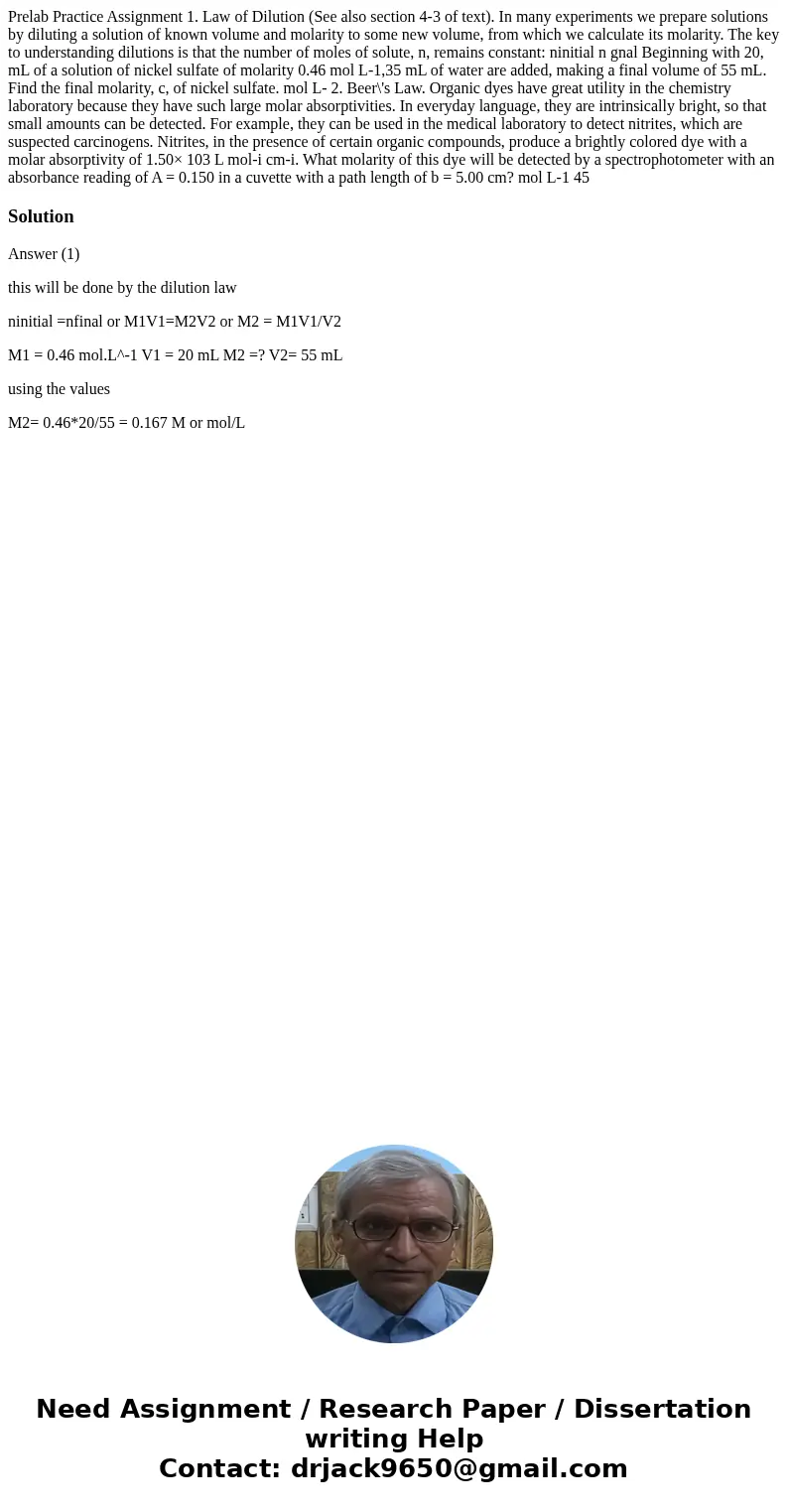Prelab Practice Assignment 1 Law of Dilution See also sectio
Prelab Practice Assignment 1. Law of Dilution (See also section 4-3 of text). In many experiments we prepare solutions by diluting a solution of known volume and molarity to some new volume, from which we calculate its molarity. The key to understanding dilutions is that the number of moles of solute, n, remains constant: ninitial n gnal Beginning with 20, mL of a solution of nickel sulfate of molarity 0.46 mol L-1,35 mL of water are added, making a final volume of 55 mL. Find the final molarity, c, of nickel sulfate. mol L- 2. Beer\'s Law. Organic dyes have great utility in the chemistry laboratory because they have such large molar absorptivities. In everyday language, they are intrinsically bright, so that small amounts can be detected. For example, they can be used in the medical laboratory to detect nitrites, which are suspected carcinogens. Nitrites, in the presence of certain organic compounds, produce a brightly colored dye with a molar absorptivity of 1.50× 103 L mol-i cm-i. What molarity of this dye will be detected by a spectrophotometer with an absorbance reading of A = 0.150 in a cuvette with a path length of b = 5.00 cm? mol L-1 45 
Solution
Answer (1)
this will be done by the dilution law
ninitial =nfinal or M1V1=M2V2 or M2 = M1V1/V2
M1 = 0.46 mol.L^-1 V1 = 20 mL M2 =? V2= 55 mL
using the values
M2= 0.46*20/55 = 0.167 M or mol/L

 Homework Sourse
Homework Sourse